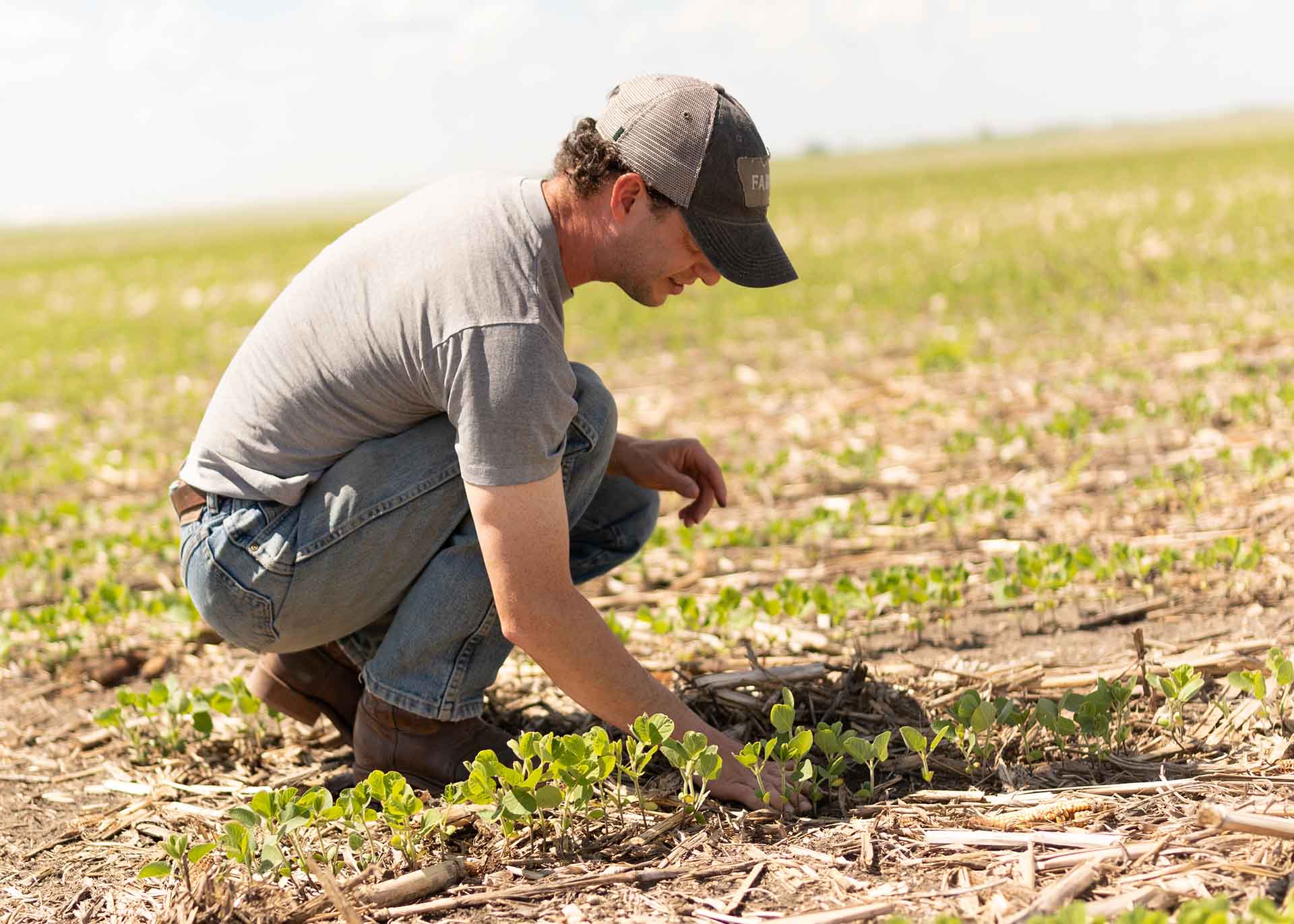
(Photo: Iowa Soybean Association / Joclyn Bushman)
Warm winter implications for the growing season
April 30, 2024 | Kriss Nelson
With the warmer weather we experienced over the winter and spring, farmers are being encouraged to go straight from planting to scouting as there could be increased pest pressure.
“I would advise getting out into the fields early this season looking for weeds, insects or diseases,” says Shane Beck, Iowa Soybean Association (ISA) research agronomist. “Farmers will need to have an active role in scouting this year.”
Insects incoming
Early-season insects, including bean leaf beetles, spider mites, alfalfa weevil and a host of migratory insects, including black cutworms and true armyworms, could be making an earlier-than-normal appearance.
“The warmer winter could mean there is a higher chance of surviving insects that could have a better start this year,” says Erin Hodgson, Iowa State University (ISU) professor and Extension entomologist. “It is hard to predict; I can only imagine it was a good winter for insects.”
Although the anticipation of earlier-than-usual insect pressure is a cause for concern, it could have actually been to the detriment of pests, Hodgson says.
“If some pests became active in February and March, they resumed development because it was nice, but there were no crops for them to eat and they might starve,” says Hodgson.
Insects may choose to feed on early-season weeds and other types of vegetation.
“Weeds are greening up earlier this spring, and some insects feed on them, making it a bridge food source,” says Hodgson.
The wide temperature swings earlier this spring may have also had a negative effect on early emerging insects.
“When the weather gets above 50 degrees some insects begin waking up from diapause, and that takes energy. If the temperature drops, they stop development. If this warm-cold cycle repeats a few times, it can use up all their energy reserves,” says Hodgson. “Sometimes insects run out of fuel (starve) and die before the crops emerge.”
Timing will be key, Hodgson says. As crops begin to emerge, so can insects.
“Scouting early seedling crops is going to be crucial this year,” says Hodgson. This spring is not typical due to the prolonged drought and unusually warm winter.”
Although most farmers use an insecticidal seed treatment, that might not be enough — especially if the seed has been in the ground for a longer period of time.
“Scouting can help you decide if a rescue treatment is going to be needed to protect defoliation caused by insects,” says Hodgson.
Disease detection
How warmer conditions affect diseases has yet to be determined.
Daren Mueller, ISU professor and Extension plant pathologist says some pathogens could be established earlier than normal.
“This could give some of the foliar diseases more of a season to cause damage,” says Mueller.
Spring rains could make diseases such as frogeye leaf spot and Cercospora leaf blight more problematic. Warmer soils could also increase the intensity of other diseases, including Phytophthora root and stem rot.
Seed treatments and a variety of resistance could help battle these early-season diseases.
“Be on the lookout and scout early, especially during the early part of the season,” says Mueller. “Pay attention to the chatter on social media or from local companies and fellow farmers about what they are seeing in their fields.”
Weeds awaken
The early warmth gave weeds a jump start this spring. Winter annual weeds and some early summer annual species began emerging in March which was problematic in some burndown scenarios.
“It is possible weeds may get ahead of the crop during the growing season without careful monitoring for weed emergence from early herbicide applications,” says Meaghan Anderson, ISU Extension agronomist. “We don’t know exactly what the season will bring, but timely monitoring will help us keep ahead of the potential problems.”
If conditions remain dry, that could have a negative effect on residual herbicides.
“Rainfall will play a big factor in how effective our residuals will be,” says Beck. “If we do not get timely rains, it could mean farmers may have to rely on a second pass of a post-emergence herbicide.”
Trials
ISA’s Research Center for Farming Innovation (RCFI) relies on farmer feedback to help develop trials that will best benefit a farmer’s return on investment and the soybean industry.
No matter the response, all data is shared.
Trials for 2024 include work with the Iowa Nitrogen Initiative, soybean seeding rates, SCN seed treatments, improved cropping systems, herbicide trials, iron chlorosis deficiency, and the effects of long-term cover crops on the management of soy and corn, specifically weed populations.
RCFI is currently recruiting farmers to participate in a soybean fungicide project and trials that start this fall involving manure, nitrogen and cover crops.
To inquire about trial opportunities, contact Shane Beck at sbeck@iasoybeans.com or call (563) 920-1103.
Back